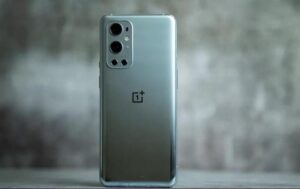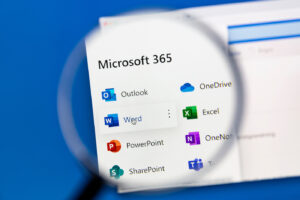The four-day worldwide initiative commemorates the fourth anniversary of quantum on the cloud, the company said.
To commemorate the fourth anniversary of IBM making the first quantum computer available via the cloud, the company is spearheading a worldwide challenge designed to help anyone—regardless of their tech background—build quantum computing skills.
IBM launched the first quantum computer that could be programmed over the cloud in May 2016, the company said. Four years later, it has a community of 225,000 users, a fleet of 18 cloud-based quantum systems boasting a greater than 95% uptime, and more than 100 clients as part of the IBM Q Network, according to IBM.
The IBM Quantum Challenge, running May 4-8, lets anyone tackle programming a quantum computer through the use of circuits, from writing their first “Hello Quantum” circuit to solving a complex optimization problem, IBM said.
“Trying to explain quantum computing without resorting to incorrect analogies has always been a goal for our team,” IBM said. “As a result, we have continuously invested in education, starting with opening access to quantum computers, and continuing to create tools that enable anyone to program them.” IBM created the first interactive open source textbook, the company said.
See: Quantum computing: Myths v. Realities (TechRepublic)
“I’m proud of our team’s decision four years ago to put our quantum systems online with the IBM Quantum Experience, aiming to accelerate innovation at a global scale by collaborating with now over 200,000 scientists, developers, and students around the world,” said Jay Gambetta, an IBM fellow and vice president of Quantum Computing at IBM, in a statement. “Hands-on training such as this coding challenge, hackathons, and our quantum internship program is the best way to encourage new diverse talent to prepare for quantum computing careers.”
As developers program quantum computers, what they are really doing is building and running quantum circuits, IBM said. To support learning about quantum circuits the company is suggesting that those interested:
· Read the Qiskit textbook chapter where IBM defines quantum circuits as we understand them today. Dive in to explore quantum computing principles and learn how to implement quantum algorithms on your own.
· Watch its newly launched live lectures called “Circuit Sessions,” or get started programming a quantum computer by watching “Coding with Qiskit.” Subscribe to the Qiskit YouTube channel to watch these two series and more.
Quantum in use
Quantum computing is already helping foster change. For example, researchers at IBM and Daimler AG, the parent company of Mercedes-Benz, wanted to help tackle the challenge of capacity and the speed at which car batteries can be charged.
The team “used a quantum computer to model the dipole moment of three lithium-containing molecules, which brings us one step closer to the next-generation lithium sulfur (Li-S) batteries that would be more powerful, longer lasting and cheaper than today’s widely used lithium ion batteries,” IBM said.
In another example, IBM Research and the University of Notre Dame scientists wanted to learn how to build cheaper and more efficient energy options.
The team used a cloud-based IBM Quantum computer “to simulate how a chemical reaction outcome is controlled by the time evolution of the entangled state of the two reactants, and how this spin chemistry phenomenon is affected by the gradual loss of magnetization and dephasing caused by thermal fluctuations.”
Spin chemistry is a subfield of chemistry that deals with magnetic spin effects in chemical reactions. Notre Dame researchers had for years used classical computers to study spin chemistry, IBM said.
“Simulations created using those computers, however, required the introduction of artificial noise to try to realistically mimic chemical reactions, IBM said. “Working together, our team of scientists used a quantum computer to simulate how spin effects control the reaction yield.”
The scientists used Open Pulse, a programming language within the Qiskit open-source quantum computing framework, to specify pulse-level control on the quantum device, according to IBM. The hope is that OpenPulse will become more of a tool to engineer noise and change quantum signals, IBM said.
“The greater control OpenPulse can offer, the better future experiments can simulate—and use—noise to better understand complex chemical phenomena such as artificial photosynthesis and solar energy conversion,” IBM said.
In recognition of everyone’s participation in the Quantum Challenge, IBM said it will award digital badges and provide additional sponsorship to the Python Software Foundation.
“We believe the full potential of quantum computing reaches beyond our expectations,” said Gambetta. “Let’s build a quantum future together.”
Also see

IBM research director Dario Gil gave a quantum computing primer at CES 2020.
Image: IBM
Source of Article




